How Mobile Robots are Revolutionizing Warehouse Processes – and why Even Small and Medium-sized Companies can Benefit
What will the future of intralogistics look like? Automation does not need to be complex, expensive or something only for international corporations. With scalable solutions such as the new RackBot System Elevate from SSI SCHAEFER, smaller warehouses can also automate their systems economically – and quicker than you would think. In this interview, Markus Külken, Vice President Head of Business Unit Robotics, discusses opportunities, misconceptions and the features of warehouse automation systems of the future.
With the RackBot System Elevate, you are bringing a new goods-to-person complete solution to the market. Who is the system best suited for?
The system is primarily aimed at companies who want to design their picking processes in an efficient and future-proof way within a small area - even if they are experiencing dynamic growth or fluctuating demand. The trick is the combination of standardized components and a highly integrated robotics system which offers full scalability at the same time as high performance density.
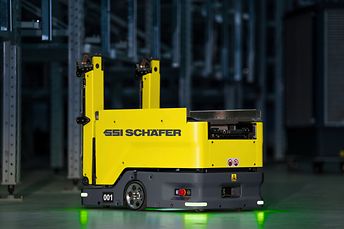
What sets the RackBot System Elevate apart from other robotics solutions on the market?
Firstly, the system is designed for maximum flexibility. The robots are "full-roaming", in other words, they move freely and independently across several levels. This enables particularly dense storage and short access times of under two minutes. Secondly, the solution is fully scalable – start with a few robots and expand at your own pace. This greatly reduces barriers to investment.
What are the economic benefits for companies?
Many of our customers report very rapid amortization – often within one year. This is mainly due to the fact that we can use our existing structures without having to modify everything. In addition, we significantly increase efficiency: more items in a small area, shorter routes, higher availability. Ergonomic benefits are also significant – employees have lighter loads to lift and shorter routes to walk.
Conveying system and robots – can they work together?
This is a typical discussion which we have also had internally. In our experience, we can say: conveying systems and automated guided vehicles complement each other perfectly! With topics such as buffering, higher technical performance and the interface between manual transport and automated guided vehicles, for example, we will still need conventional conveying systems in the future. Where conveying sections were previously out of the question due to the lack of space or long routes, automated guided vehicles (AGV) remain an ideal solution today. A rethink is currently taking place in this regard – high performance and flexible hybrid systems are now becoming increasingly relevant.
Can you give us an example of such hybrid systems?
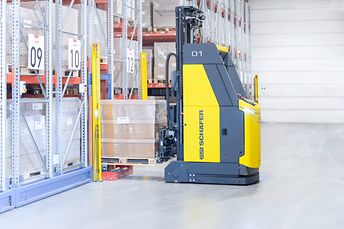
You said that a lack of space is one reason for using AGV. Are there any other reasons?
Automation of course always brings benefits for planning security. With the AGV provided by our partner company DS Automation, the customer can enjoy greater flexibility and scalability opportunities in comparison to conventional automation approaches. This means that small steps can be taken towards initial automation with reduced risks. The existing concept can then be expanded or modified on the basis of initial experiences and subsequent growth. And last but by no means least, repetitive activities can be organized differently to relieve employees and address the skills shortage.
How does automation change the role of the employees?
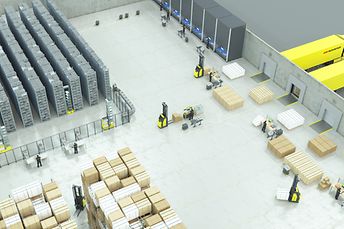
The focus is still on the employees. Automated guided vehicles mainly take over repetitive tasks and those which are an ergonomic burden for employees. In fact, it appears that many companies actually hire more employees following the introduction of automated processes. Why? automation can prevent the costs associated with company growth from increasing 1:1 with turnover. Furthermore, our SSI Mobile Robots can help to make work stations much more ergonomic and thus more attractive – and looking at the demographic changes in the coming years, this will become increasingly important.
Does automatic picking also play a role in this context?
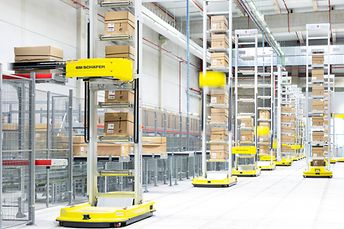
Absolutely! This is why, in collaboration with experienced suppliers, we have also expanded our portfolio to include mobile robots for handling small parts. These RackBots are used, for example, by our satisfied existing customer Desigual, an international fashion company from Spain. The focus here is to find an efficient solution for compiling collections and picking orders. The integration of 24 RackBots enables the customer to now pick 30,000 units per day in two shifts and, as a result, greatly improve performance.
For global players such as Desigual, robot technology is certainly recommended – for small and medium-sized companies however, maybe SSI SCHAEFER is too ambitious?
On the contrary! At SSI SCHAEFER, we place a strong focus on small and medium-sized companies. We recognize the pain points and know what a challenge it is to take a step towards automation. We provide our customers with personalized advice and together look at the opportunities available to them. Full automation is not always necessary immediately. For most small and medium-sized companies, automation of core elements is the right path in order to achieve a positive return on investment (ROI) and to overcome challenges such as skill shortages or delivery performance bottlenecks.
Can gradual automation also absorb the risk associated with a major investment?
Yes, and this is crucial for small and medium-sized companies. Our scalable and flexible solutions enable many customers to grow more at a slower pace. Instead of a major and unpredictable investment, we start small – future expansions are possible at any time, and we often plan ahead together during the initial planning phase.
Customized solutions require strong partnerships. Is it confusing for the customers due to the many parties involved?
On the contrary! Our broad technological basis and specific partnerships with e.g. DS Automotion or cloud-based WMS providers enable us to offer individual and scalable solutions, while keeping track of everything: as central contact we coordinate all parties involved and make sure all components interact perfectly. This creates trust, reduces complexity and lowers the entry barriers to automation for small and medium-sized enterprises.
In your experience, what is the most important factor for removing barriers in the area of automation?
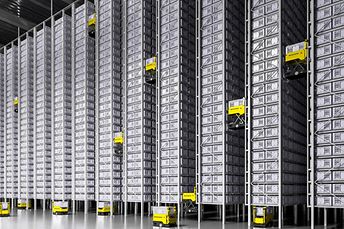
Even though we are talking about robots, the personal touch is still our priority. Companies who are investing in automation for the first time are understandably often unsure. So it is important that we build trust and carry out a detailed analysis of requirements. At the beginning, customers sometimes don't even know what they need. Or sometimes they have quite specific ideas. We always define the project goals together and point out opportunities and alternatives. And, of course, we also look carefully at the overall economic perspectives. For us, it is not about presenting a particularly impressive logistics concept - it is more about offering the customers the best solution for their needs.
So robot technology is not necessarily always the correct solution for every company?
No, not necessarily. To find out, we always provide a comprehensive consultation solution at SSI SCHAEFER. For some customers, our conventional logistics solutions may be more suitable. However, in most cases, the hybrid systems mentioned earlier are ideal, these are combinations of automatic and manual components.
And finally: what does warehouse automation of the future look like?
That is, of course, like looking into a crystal ball. I am convinced that many effects that we are currently seeing will intensify in the coming years: crises will occur in shorter cycles and the skills shortage will remain an issue. So it is very important for us to start working now on quicker and simpler integration options for robot technologies. Artificial intelligence will play a crucial role – we already use it in many of our systems and will soon be able to see new applications. I think that in ten years, logistics will be even more hybrid than it is today. As a synergy of people, machinery and AI.
About the author:
